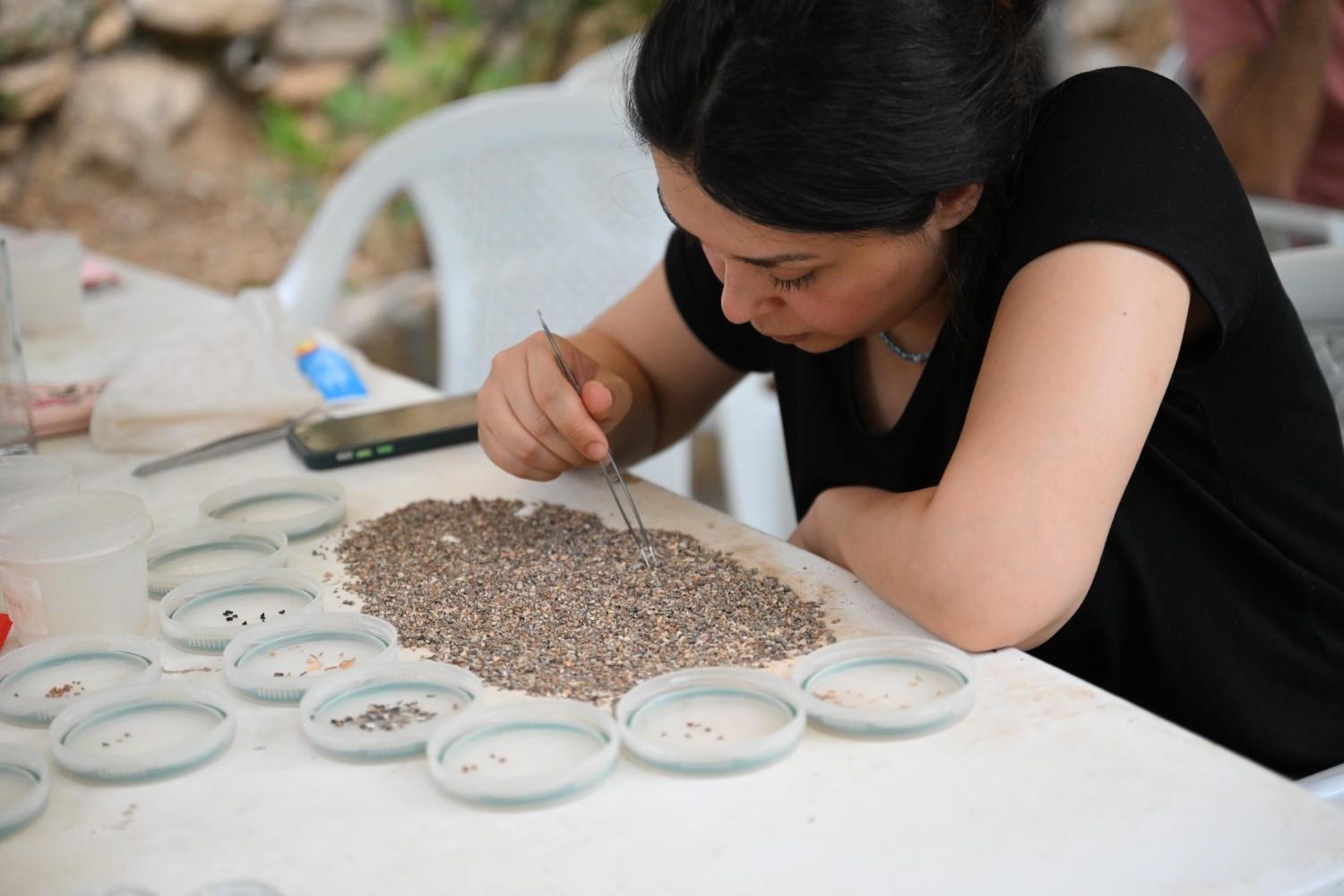
Excavations at Direkli Cave in the Onikişubat district of Kahramanmaraş, ongoing for 19 years, have uncovered a large number of ornamental beads believed to date back to the Epipaleolithic period.
Located in the Döngel neighborhood, some 65 kilometers from the city center, the cave has been under excavation since 2007. Previous digs revealed a mother goddess figurine, Paleolithic remains, farming tools, graves, and 13,000-year-old bone needles. With the latest discoveries, Direkli Cave continues to shed light on the region’s history.
Professor Cevdet Merih Erek, head of the excavation team and a faculty member of the Archaeology Department at Ankara Hacı Bayram Veli University, told Anadolu Agency that Direkli Cave emerged as a cultural and aesthetic center connecting the Arabian Peninsula, the Caucasus, the eastern Mediterranean and Anatolia during that period.
“This year’s excavations focused on adornment culture,” Erek said. “We worked in eight excavation squares, reaching from the third to the eighth archaeological layers. The inhabitants of Direkli Cave valued adornment as much as nutrition and hunting. Numerous beads made from stone, bone, and seashells have been unearthed. Their diversity, treatment with fire, and coloring with red ochre strongly reflect people’s desire for self-decoration and distinction between 9,500 and 14,000 B.C.”
Erek noted that the colorful beads contribute significantly to Anatolian cultural history. “The fact that even animals were painted and adorned in Anatolia’s pastoral, village and plain cultures reveals how deeply rooted this tradition is,” he said.
Emphasizing that adornment was vital for Epipaleolithic communities, Erek added: “Findings show that the people of Direkli Cave were not only meeting daily needs but also attaching great importance to adornment as an artistic expression. Beads, raw materials, production techniques, and trade routes form integral parts of their life story.”
Erek further explained that wild goat bones and horns from the cave indicate direct connections between the Caucasus and Anatolia, highlighting that life in Direkli Cave extended beyond local communities, engaging in broader cultural interaction and mobility across a vast region.